Iconic Places: The Kemmelberg in Ghent-Wevelgem
The crux of Ghent-Wevelgem is the famous Kemmelberg climb
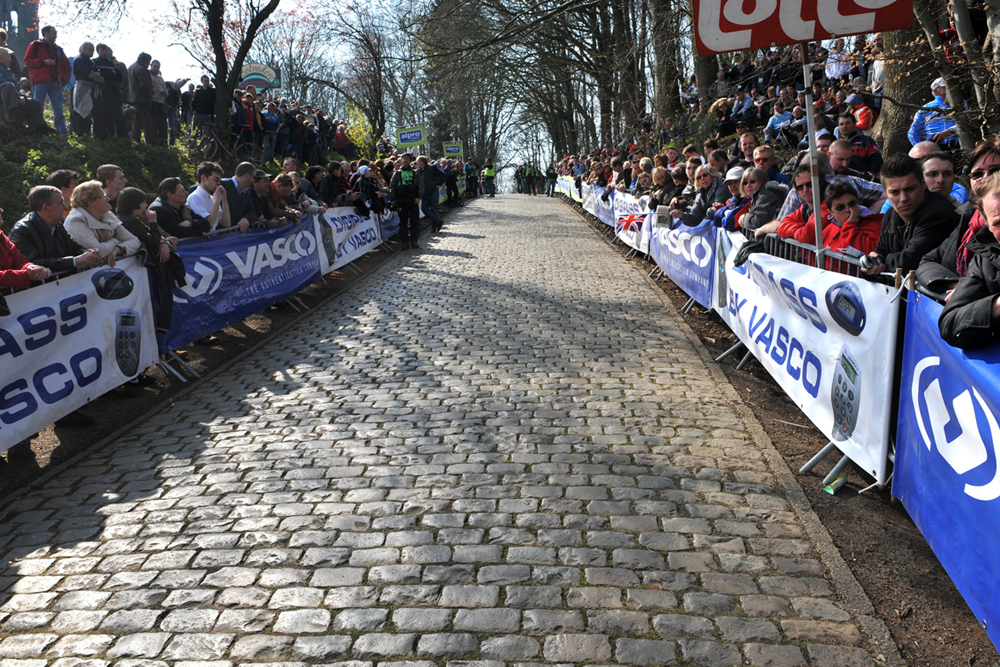
Photo: Graham Watson
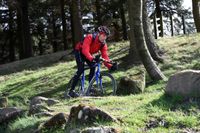
The 2017 edition of Ghent-Wevelgem takes place on Sunday, March 26. Here we look at the Kemmelberg climb, which could prove decisive for the win.
The Flanders plain stretches from the Netherlands through Belgium and right to the foot of the Pas de Calais hills in France. Its flat, black soil is crisscrossed by levied rivers and dominated by a sky that stretches forever in all directions. Except for one part. Where West Flanders presses up against the border with France the land has buckled into a series of rounded hills, and within them lies the Kemmelberg.
The hills are called Heuvelland, Flemish for ‘hilly country,’ and it’s a very pretty, very rural part of Belgium. Farming isn’t as intense here as on the agri-factory plain. It’s border land, but still a place of peace and harmony where cattle graze, birds sing and people’s lives flit between two countries without barrier or obstruction.
“The Kemmelberg is a savage little climb made harder by the up and down effect of the hills before it, by the deadly Flemish roads and by the speed of the race. I loved it.” - Barry Hoban, winner of the 1974 Ghent-Wevelgem.
But today’s harmony belies the Kemmelberg’s violent past. Famous now for playing the pivotal role in a bike race, the Kemmelberg saw thousands die during the First World War. At 159 metres high the hill is a key strategic point, and it came under attack during the 1918 Spring offensive by the German army. It was held by the allies but later lost, and in the fighting more than 120,000 lives were lost. So many that their memory cannot be set aside from the Kemmelberg, and the hill is littered with stark reminders of their passing.
Happier battles
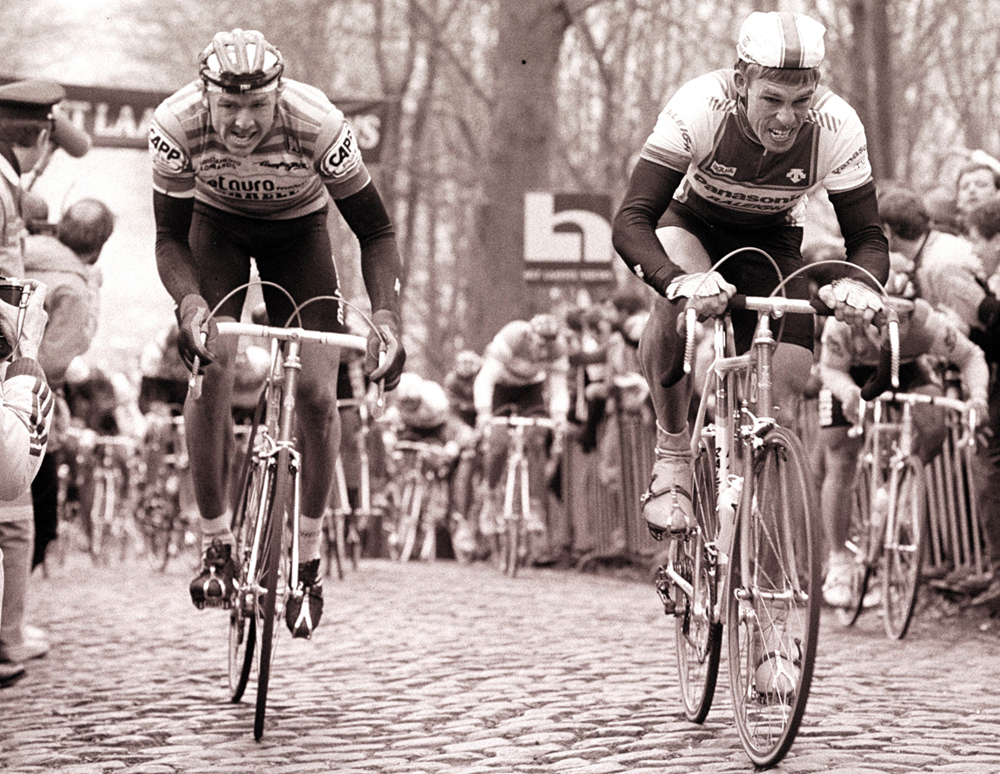
Lots of people visit the Kemmelberg to see the war memorials, but even more visit because of its place in a much happier battle, the fight to win one of cycling’s classic races, Ghent-Wevelgem. The two are inextricably linked. The Kemmelberg is the biggest single factor in the race, the key to unlocking victory. It’s a place that helps gives Ghent-Wevelgem its unique character.
The latest race content, interviews, features, reviews and expert buying guides, direct to your inbox!
>>> The Koppenberg and the defining cobbles, bergs and climbs of the Belgian Classics
Every great race needs a unique selling point, but Ghent-Wevelgem didn’t have a character of its own when it started. The first Ghent-Wevelgem was held in 1934. It was a race for juniors, going in an almost straight line south-west from Ghent to Kortrijk then heading right to take in a few Heuvelland hills, but not the Kemmelberg.
Watch: essential guide to the 2017 Cobbled Classics
The race turned professional in 1945, when it was won by Robert Van Enaeme, who had already won twice as a junior. It was 200 kilometres long and went through the Flemish Ardennes, climbing the Kwaremont, among other hills. Then it just clipped the Heuvelland by including the Zwarteberg and Rodeberg before the finish in Wevelgem.
>>> What bikes will the pros be riding in the cobbled Classics?
It was a tough course, but its character was borrowed from other races, notably the Tour of Flanders. It switched from being a summer to a spring race in 1947, but Ghent-Wevelgem only started to look like as it does now when it grew up and turned its back on the Flemish Ardennes.
A Classic is born
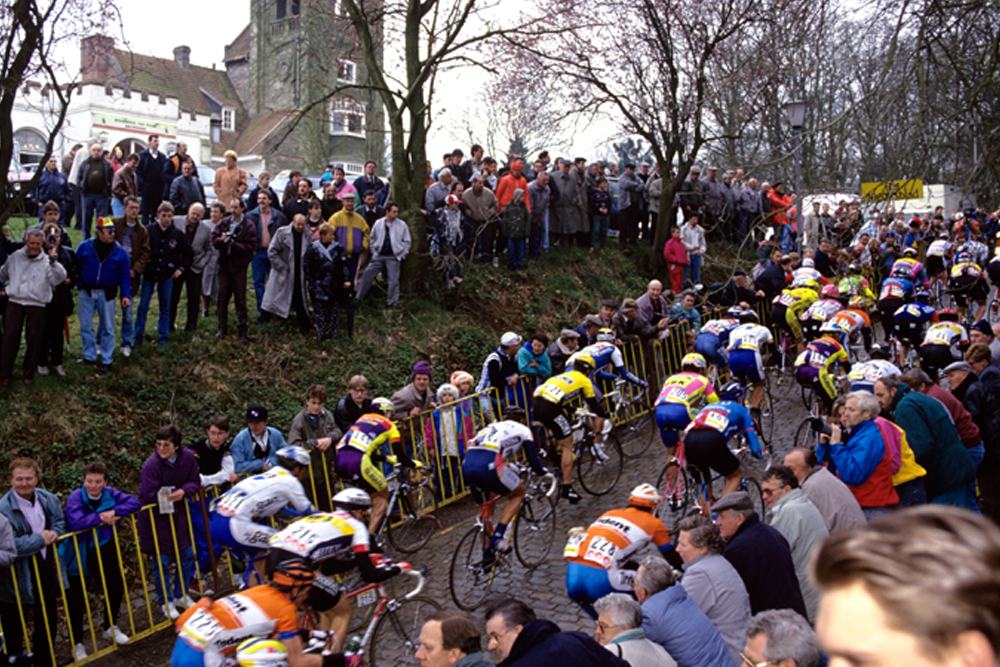
The Kemmelberg was introduced before that, in 1955, along with more surrounding hills, but the race still used some Flanders climbs and still struggled to carve out a niche in cycling. Between 1957 and 1959 Ghent-Wevelgem linked up with Het Volk to form the Flanders Trophy weekend, but the most significant change came in 1958 when it headed for the coast then did a circuit of Heuvelland hills, including the Kemmelberg, before the finish. The organisers continued tinkering with the route, but finally settled on broadly what it is today in 1962. At last a Classic was born.
A modern Ghent-Wevelgem is a race of four phases. A warm-up of flat roads precedes a left turn and a run along the coastal dunes. The wind blows the race sideways here, and the battle begins as the field fans out into giant echelons covering the width of the road. Get left behind here and it’s game over, but too much effort will make itself felt later. Another left, a short trip east, then it’s on to the classic Zwarteberg, Rodeberg, Monteberg, Kemmelberg circuit.
Other hills are added and taken away in different years, and although there are two circuits now, there used to be three. Finally, after the last circuit, which always ends with the Kemmelberg, there’s a 30-kilometre wind-assisted dash to the finish. It’s a sprinter’s classic that rarely has a whole-field sprint. The hills take their toll, and the hardest of them all is the Kemmelberg. The crucial question asked of every sprinter every year is, will you get over the Kemmelberg?
On the climb
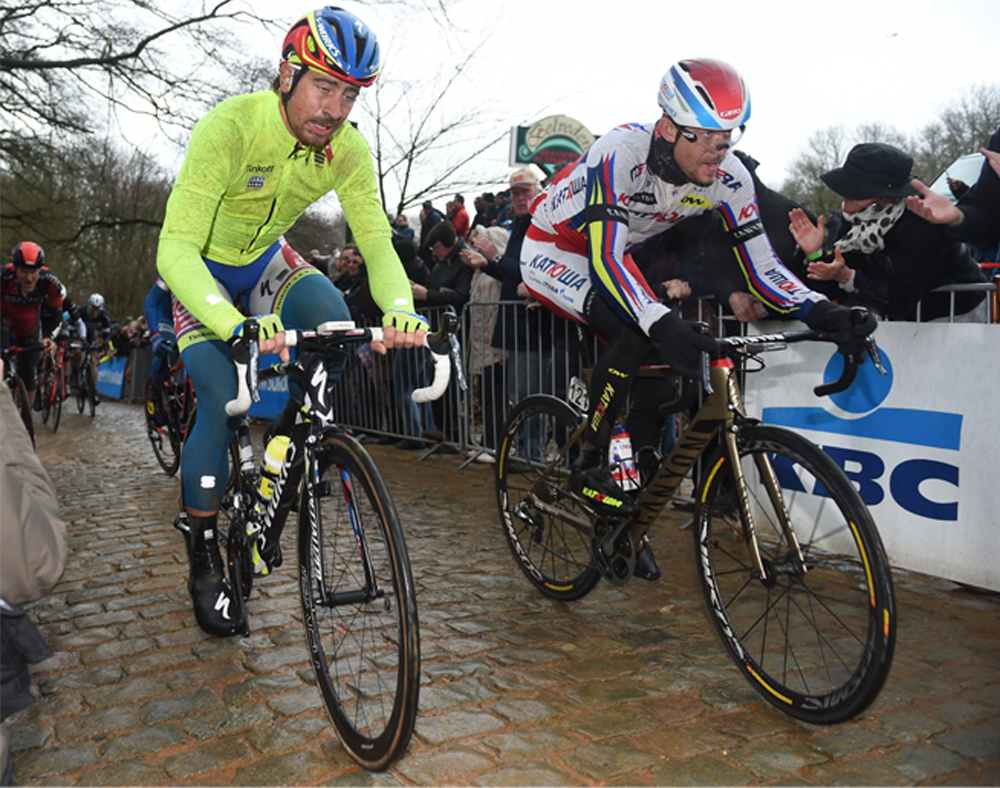
There are three ways up the climb, and Ghent-Wevelgem has used all of them. Nowadays it tends to climb the east side. The first section is easy, dead straight and rises at between two and four per cent towards the base of the climb proper.
The final kilometre is the famous bit, and it begins just short of a sharp left-hand bend. The trees that line the hill begin to crowd in now, meaning the surface is often wet, even in summer. It’s here that the big decisions are made.
The gradient really bites now, changing abruptly to eight per cent for 300 metres then into double figures until the climb‘s shallow domed top. Strong men must use this section to break the sprinters, and sprinters have to hang on. It’s a classic struggle, and Barry Hoban’s win in 1974, still the only British victory, was the epitome of it.
How to ride cobbles
“The last time up the Kemmelberg was brutal. I was in the front group, confident of my chances, then Eddy Merckx went on the rampage. Riders were popping off the back all over the place, and the group began to disintegrate. I was just hanging on, and I mean just. I was at my limit, and couldn’t have gone one tenth of a kilometre an hour faster, but Merckx still piled it on.
>>> 10 ways the pros modify their bikes for the cobbles
“Then, towards the top, I heard my chain begin to chatter. We had friction gears in those days, and when you put down maximum power your legs could pull the chain off the biggest sprocket. I had to take my hand off the bars to hold the gear lever down, and I lost a few metres. The top couldn‘t come soon enough, but when it did they didn‘t slow down. The attacks continued right up to the finish,” Hoban says, recalling the day he outsprinted Merckx, triple Tour of Flanders winner Eric Leman and ‘Mr Paris-Roubaix’ Roger De Vlaeminck to take the win.
You need friends
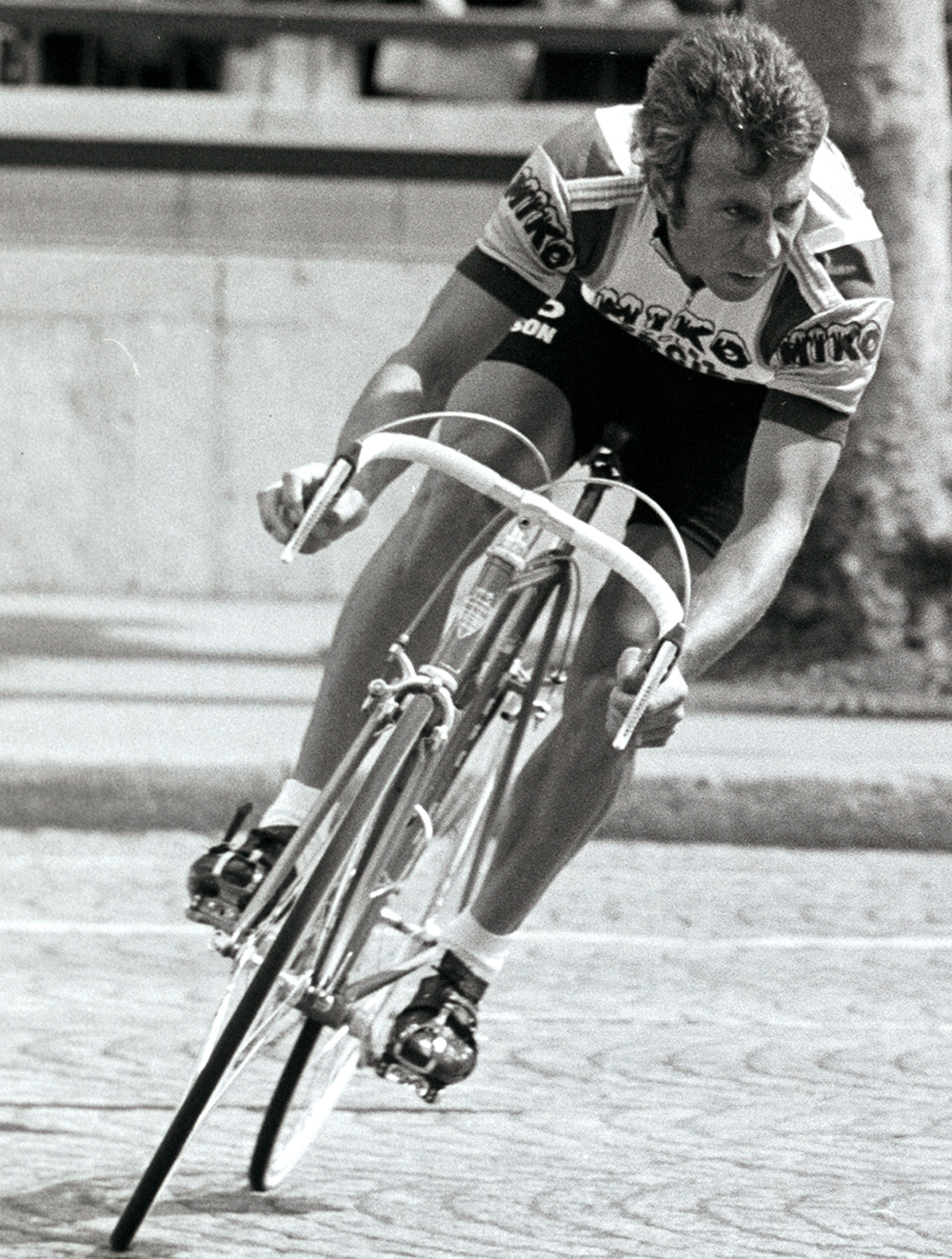
Ghent-Wevelgem was 244 kilometres long in Hoban’s day, with three circuits of Heuvelland, and therefore three climbs of the Kemmelberg. But then as now the final kilometre of the climb, last time up, was the crucial point of the race.
Sprinters have to get over, if not with the leaders then within striking distance of them. If they can’t then they have to have a good team, or even better plenty of friends in the peloton, as the winner in 1996 and 1999, Tom Steels, explains.
“In 1999 my team, Mapei, and in particular Johan Museeuw and Wilfried Peeters, were strong enough to take me from the Kemmelberg and close the gap on the break before the finish. In 1996, though, I needed more help. It came because the break of 11 that formed the second time up the Kemmelberg had seven Italians, but not one Belgian, in it. Our national pride was at stake and all the Belgian teams worked together.”
>>> Can an amateur beat Johan Museeuw up the Oude Kwaremont with the help of a motor? (video)
Ghent-Wevelgem favours sprinters because they have two cards to play. The robust ones like Hoban can cling to the front of the race, because the climbs are tough but not quite as selective as the Tour of Flanders, and there isn‘t as many. The fastest ones, like Steels, must get over the hills as best they can, hoping the resulting gaps aren’t too big, and use any help they get to close down on the flat run to the finish.
Going down
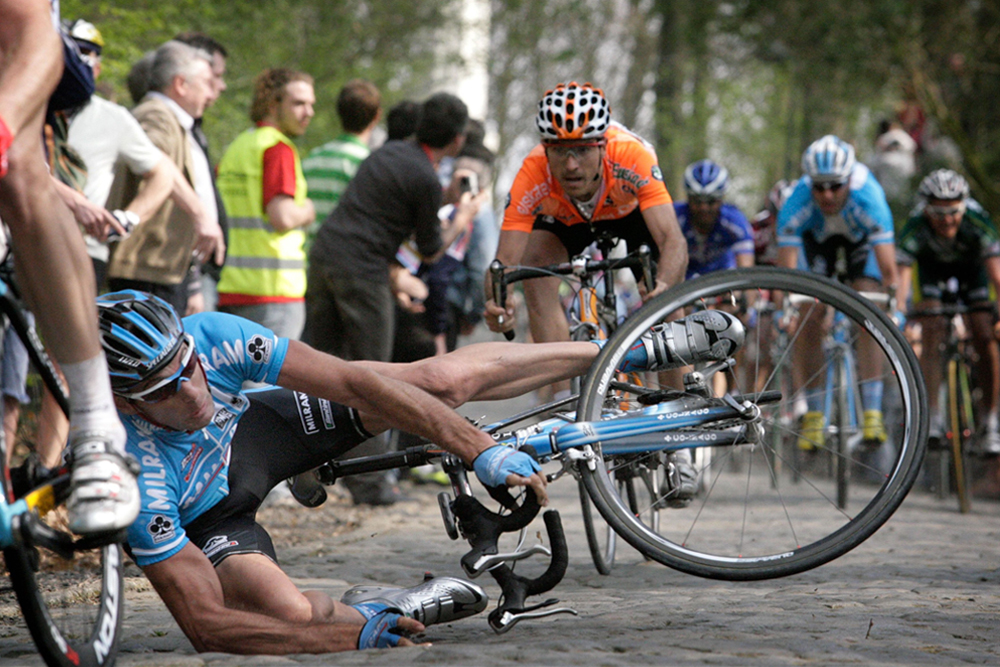
Selections used to be made going down the Kemmelberg as well. At over 20 per cent the first part of the descent is steeper than any part of the eastern climb, but its slick cobbles are just as wet as those on the other side. A moment’s inattention, too heavy a touch on the brakes, a wrong-stepping spectator; they can all spell disaster. Eventually too many fell in 2007 and the descent was changed, its effect taken out of the equation.
Instead of going straight down on the cobbles now, the race takes a longer route, using a narrow strip of tarmac called the Klokhofweg that joins the cobbled road further down, near to the French Ossuary, where the remains of 5000 unidentified soldiers are buried.
>>> The Monuments: Cycling’s five biggest one-day races
Since 1962 Ghent-Wevelgem has built its own identity. It took another step in 2010 by swapping from its midweek slot to the last Sunday in March, adding more hills, plus the organisers want to add more kilometres in the future. Time will tell whether this changes the character of the race, but for now the Kemmelberg remains the key climb, the place where the strong must kill or be killed, albeit in the sprint further up the road, and where cycling’s fastest sprinters have to chew their handlebars and try to hang on.
The Kemmelberg’s place in cycling is the fulcrum around which a whole race pivots, and not many places can say that. That means a lot of passion, attention and adrenalin is focussed onto a strip of cobblestones 3,000 metres long. You have to visit at least once on race day to sample it.
Top men of the Kemmelberg
Freddy Maertens
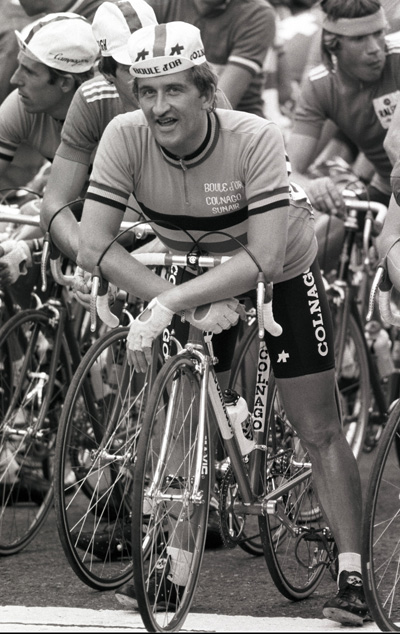
FREDDY MAERTENS IN 1982
The 1975 Ghent-Wevelgem was Maertens’ first Classic victory, and it was one achieved in terrible conditions - the Kemmelberg was covered in snow. Maertens was on the verge of everything; a roller-coaster life ride to world number one, set-backs, comeback and eventual painful decline. “But do you know what I remember about my first Classic?” he says today. “Just how happy I was to win. I had bad times, I lost all my money, but nobody can take away the essentials. For me they are my wife, my daughter and the happiness of winning.”
Born in Munich but in love with Belgium, Andreas Klier lived in Flanders for years trying to achieve his dream of winning the Tour of Flanders. He came close in 2005 when he was second, but he won Ghent-Wevelgem in 2003, which he feels goes someway to making his dedication worthwhile. “It was a good to win a big race in a country where cycling matters so much. And that’s why I love Belgium, not for the races as such, but for the simple pleasure and enthusiasm Flemish people have for bike racing,” he says.
If any is, Ghent-Wevelgem is the British Classic. Hoban won in 1974. Tom Simpson took second in 1963. Roger Hammond did the same in 2007, and so did Sean Yates in 1989. At 270 kilometres it was the last of the long versions, the race is nearer 200km today, and Yates led for 246 of them in freezing rain. “There were four of us at first; me, Gerrit Solleveld, Bruno Cenghialta and another rider. We lost Cenghialta and the other guy first time up the Kemmelberg, but we kept on. Solleveld was strong, he certainly didn’t shirk his turn, but looking back now I think I made a mistake by not attacking him last time up the Kemmelberg. I really thought I’d beat him, but he whopped me in the sprint,” Yates says.

Chris has written thousands of articles for magazines, newspapers and websites throughout the world. He’s written 25 books about all aspects of cycling in multiple editions and translations into at least 25
different languages. He’s currently building his own publishing business with Cycling Legends Books, Cycling Legends Events, cyclinglegends.co.uk, and the Cycling Legends Podcast